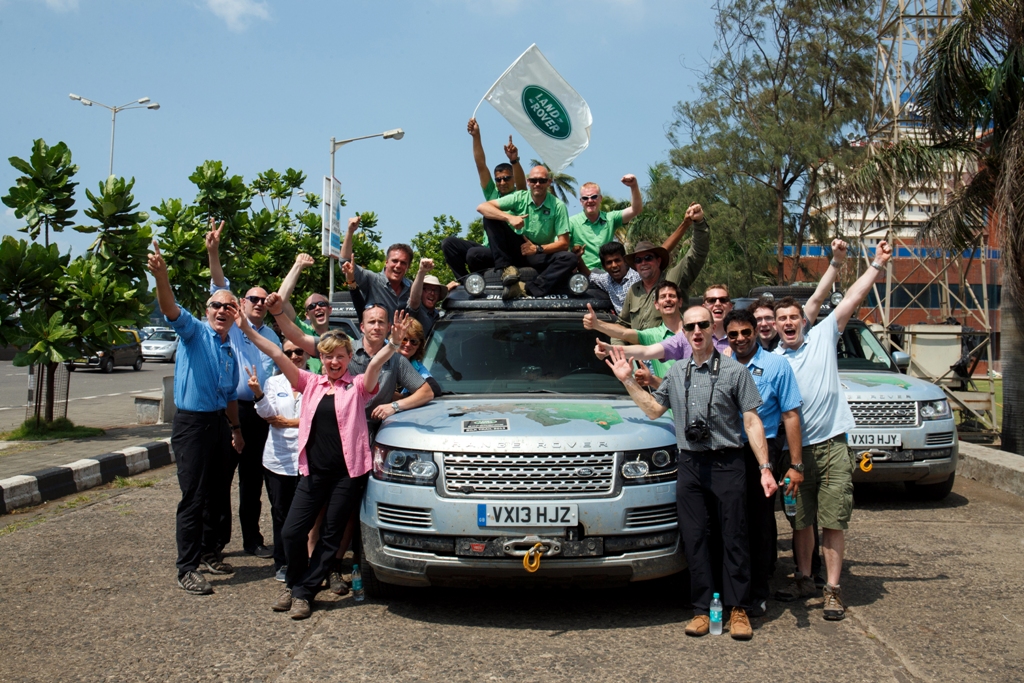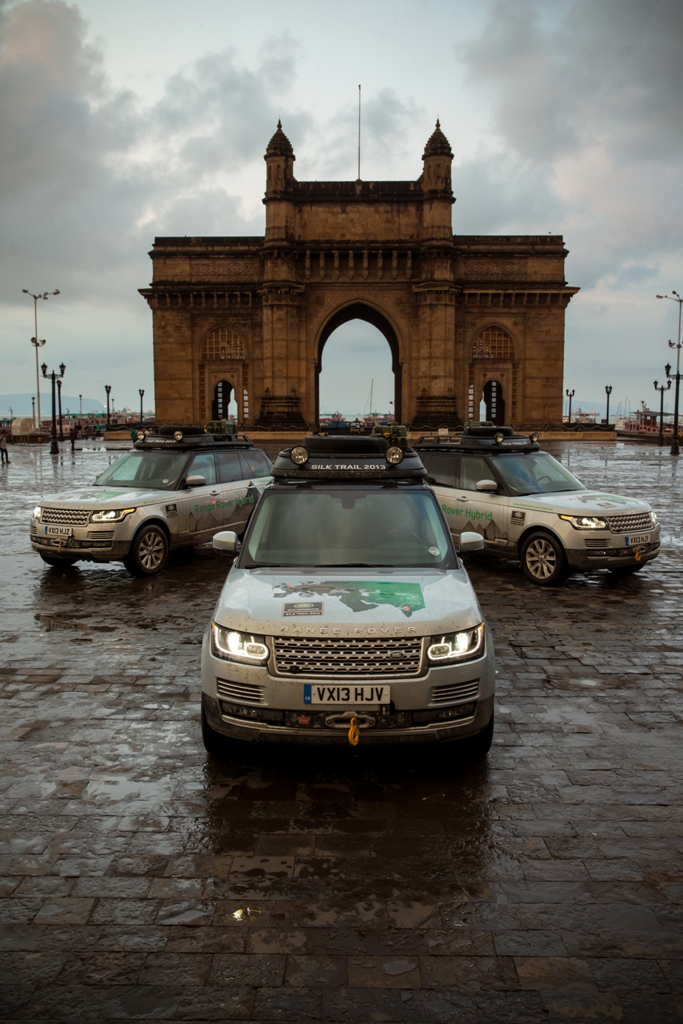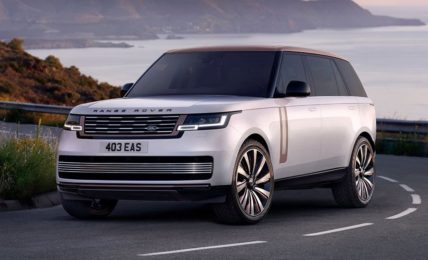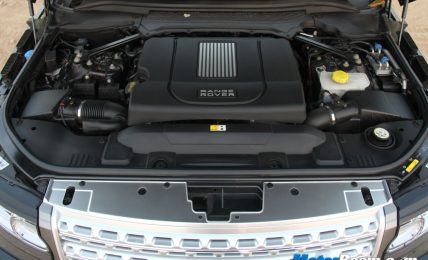Land Rover recently announced the Range Rover Hybrid versions, which will be available on both Range Rover and Range Rover Sport. The British automaker came up with a Silk Trail expedition to demonstrate the hardcore off-roading ability of the new offerings mated to hybrid technology. The expedition saw three Range Rover Hybrid prototypes covering 16,853 kms along the Silk Trail from Solihull, UK (home of Land Rover) to Mumbai, India (home of Land Rover’s parent company, Tata Motors). In between the expedition covered the borders of France, Belgium, Germany, Poland, Ukraine, Russia, Uzbekistan, Kyrgyzstan, China and Nepal.
The massive Land Rover expedition journey covered 53 days, 13 countries and two continents, testing the Range Rovers to their limits in extreme temperatures and terrains. The prototypes went through -10 degrees to 43 degrees Celsius at altitudes of 5500 metres. The Silk Trail 2013 expedition is the final validation test for the Range Rover Hybrid before it hits the production lines. The Range Rover Hybrid is powered by a 3.0-litre TDV6 diesel engine coupled to a 35 kW electric motor, which produces a combined power of 335 HP with 700 Nm torque, mated to the 8-speed ZF automatic transmission.
The Range Rover Hybrid is quicker than a standard Range Rover, which means the 0-100 km/hr sprint is done in 6.7 seconds with a top speed of 225 km/hr. The hybrid system adds only 120 kgs of extra weight, which includes Lithium-ion battery pack, inverter and electric motor. Throughout the dynamic expedition of the Silk Trail, the vehicles returned an average fuel consumption of around 16 km/l. The only technical setbacks faced during the long drive were 15 punctures, four wheels damaged by deep potholes and four windscreens cracked by stones thrown-up on loose surfaces.







